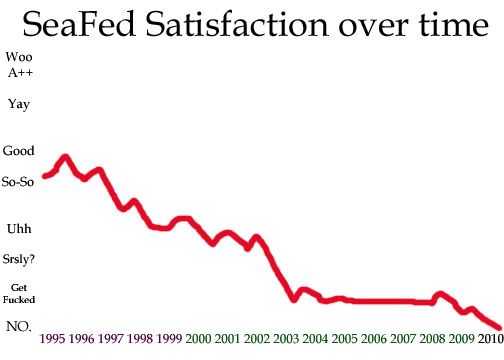Caitlin Flanagan, whom I am coming to believe is a bit of a froot loop, or at least has a moderate case of fogey-dom, has landed in my mailbox again courtesy of the Atlantic. This month she is writing about how teenage girls “endure” hookup culture.
In approaching this article we first need to consider the fact that her perspective is heteronormative and her examples of wholesome teen culture are, well, stuff white people like. In short, she makes assumptions that teenage girls are sexually-oriented toward teenage boys and are under the thrall of girly pop culture romance baloney.
Further, Flanagan doesn’t really define hookup culture, which, fair enough, it’s been in the lexicon for a few years now and people generally know what it means. She does kind of talk around the idea of hookup culture, and an example that she gives is of a solo young woman participating in a locker room gang bang, which some people might consider a varsity-level “hookup” at any age.
So whether girls are either burned by hookup culture, or, like the plucky heroine of a Victorian-era romance novel, they manage to avoid some faceless boy skeeting in their eye through a combination of spunk (def. 1) and luck, they yearn towards romantic impossibilities. She cites the example of the High School Musical franchise and the music of Taylor Swift as where young girls are taking their cues about romance from. Girls want boyfriends, she claims. Girls want to be loved and they want a happy ending. I wonder if Flanagan is too old to remember that teenagers can identify bullshit pop culture constructs? Is it not possible that this treacly pap is being engineered to appeal to the parents of these girls, to assuage some of the pearl clutchery engendered by a media that tells them that their daughters are getting DPed by the lacrosse team?
Flanagan compares the youth of today to the previous generation. A girl is “taught by her peer culture that hookups are what stolen, spin-the-bottle kisses were to girls a quarter century ago. She is a little girl; she is a person as wise in the ways of sexual expression as an old woman.” O RLY, Flanagan. If you want to pull pop culture as a reflection of society, a quarter of a century ago Fast Times at Ridgemont High portrayed a 15-year-old girl having an abortion, and I don’t think the character got knocked up from playing spin-the-bottle, and I don’t think you can shove 1985 (or the 70s, or the 60s) into the same weird platonic-ideal youth culture box as people have done with the postwar period in the US.
Can anyone else see the giant elephant in the corner of this pile of malformed claims? Where are teenage boys in all this? They mostly exist in this article to deny love, and to use teenage girls as their sexual playthings. Do teenage boys not desire love and stable and healthy relationships? Let’s say for a moment that all teenage boys do seek to take advantage of girls. Flanagan writes about all this exploitation as something that is kind of just magically “happening” to girls, which seems a little rape-culturey to me.
Then there is this, her closing paragraph: “There might seem something wan, even pitiable, about all these young girls pining for boyfriends instead of hookups. But the wishes of girls, you have to remember, have always been among the most powerful motivators in the lives of young men. They still are.” What is this, I don’t even. Did you suddenly hit your word limit, Flanagan? At the very least, this seems to contradict all her business about girls following the desires of boys, typified by statements like, “Is it any wonder that so many girls are binge-drinking and reporting, quite candidly, that this kind of drinking is a necessary part of their preparation for sexual activity?”
I should say that Flanagan’s viewpoint is not as blinkered as the points I’ve pulled out here. She does make some decent points about the very real contradictory expectations that adults (who are inured to these contradictions) impose on the young, especially in regards to sexuality.
My biggest sticking point is that Flanagan portrays teenage girls as resigned participants in some kind of sexual vacuum (boys exist only to deny them love and to fuck them unpleasantly, and then run), having no apparent agency or sexual desires of their own. Again and again popular culture wants to portray the teenage girl as the innocent or the victim, or completely over the line as in her example of the slattern in the novel she cites in her article:
In Testimony, the sex party occurs at the fictional Avery Academy; Shreve imagines Siena, the girl at the center of the event, as a grifter, eager to exploit her new status as victim so that she can write a killer college essay about it, or perhaps even appear on Oprah.
Just like real humans, teenaged girls can like romance AND they can like fucking. They can enjoy these things together or separately. Ultimately, Flanagan’s article is yet another pointless rehash of myths and half-truths about teenage culture.





